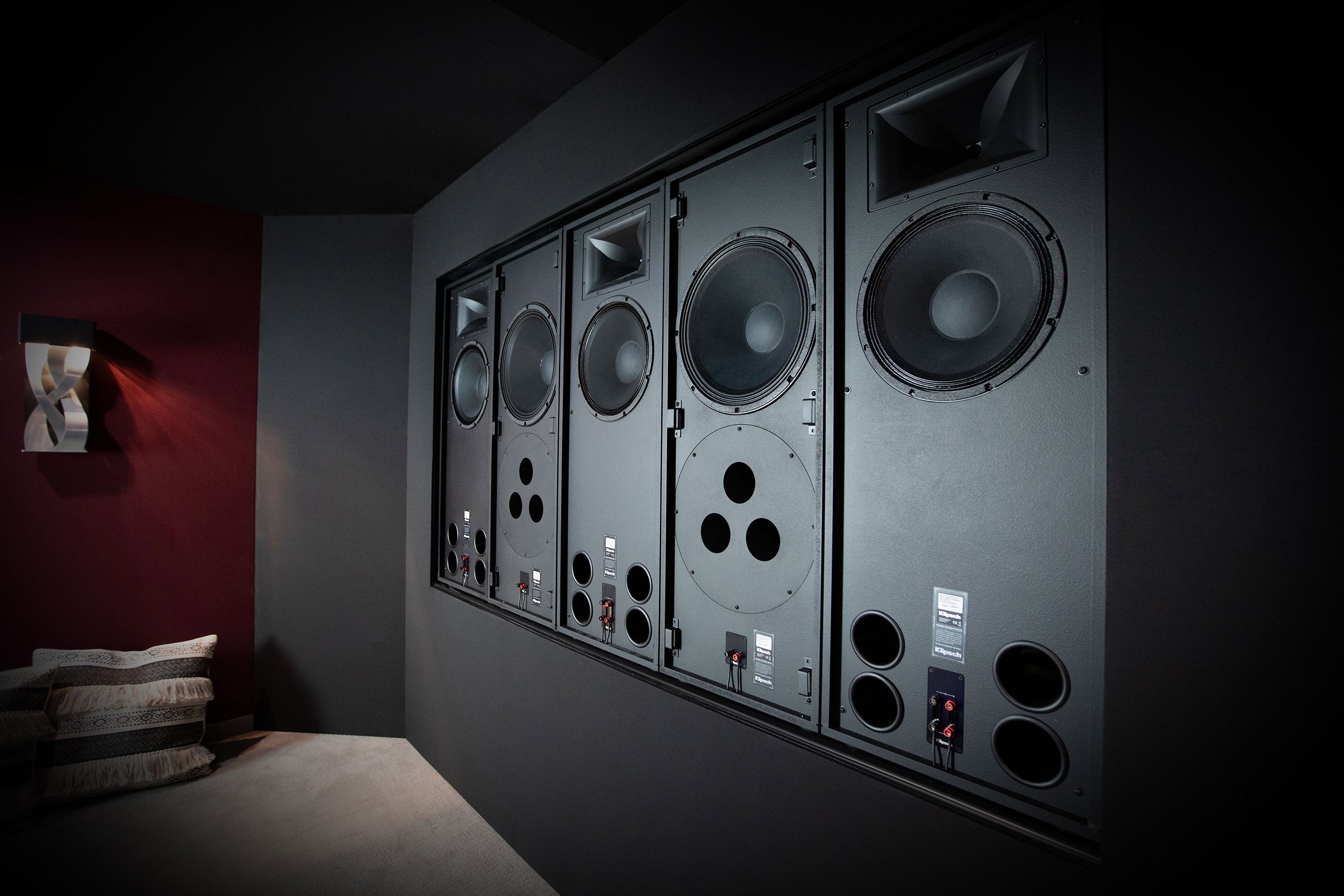TIME TO UPGRADE YOUR HOME THEATER SPEAKER SYSTEM
Upgrading from a 5.1  home theater system? Or perhaps you’re trying to decide whether a 5.1 or 7.1 channel home theater receiver is best for you.
Either way, Klipsch is here to show you how to set up a 7.1 system step by step.
THE 7.1 CONFIGURATION
The standard setup for a 7.1 configuration includes a center channel speaker, left and right front channel speakers, a subwoofer (Fig. A shows two locations options for a single subwoofer - or you can add a second subwoofer placed in both locations making a 7.2 system setup), left and right surround speakers and left and right rear surround speakers.
The rear surround speakers add more depth to the surround sound experience by spreading the sound across four speakers (the left and right surrounds and rears), rather than two, resulting in more directed, immersive sound.
The two additional speakers also help to fill larger rooms more completely. Plus, more and more films are being released or home viewing in 7.1 formats, adding to its appeal.

Fig A. - The full 7.1 system setup.
THE CENTER CHANNEL
Place the center channel speaker immediately above or below the screen, directly facing the listening area (see Fig. B). If the speaker is being set on a shelf or stand, be sure that the leading edge of the speaker is flush with the edge of the stand, to maintain dialogue clarity.

Fig. B - Center channel placement
THE FRONT SPEAKERS
The left and right front speakers should be placed at an equal distance from the screen and at least six feet apart; the left, right and center front speakers should be an equal distance from the ideal viewing position. To enhance the experience, some toe-in might be desirable. If so, be sure to identically angle each speaker and maintain equal distance from the viewing position.

Fig. C - Right and left front channel speakers.
THE SURROUND SOUND SPEAKERS
The left and right surround speakers (shown as "A" in Fig. D below) must be placed equally to each side and slightly above and behind the viewing position. Left and right rear surround speakers (shown as "B") should also be about three feet above (and behind) the seated listeners’ heads.

Fig. D - Four surround sound speakers placement.
THE SUBWOOFER
The three most common subwoofer locations include corners, and placement along a wall or beside a front speaker (which can create a better blend with the front speaker, at the cost of sacrificing overall volume).
Experimentation with Klipsch subwoofer placement is highly encouraged. Slight adjustments can create big differences in bass reproduction.

Fig. E - Subwoofer placement.
WHERE TO PLACE A SUBWOOFER: 3 TIPS
And if the room you are working in to set up a 7.1 system does not fit these exact specifications - it's ok! Not everyone has a room with open, rectangular space and perfectly placed power sources. You're more than likely going to have to make some adjustments.











